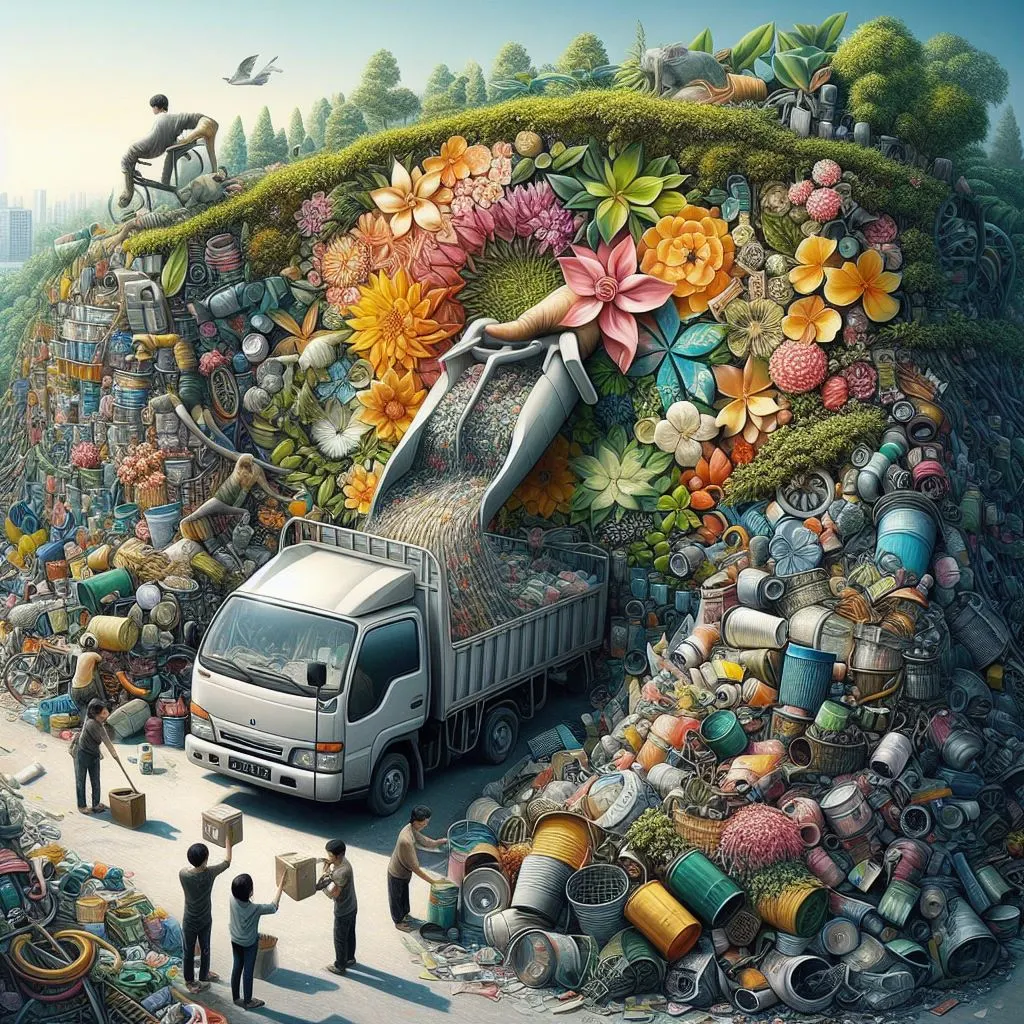handshakejournal.org – In recent years, the world has seen a surge in environmental awareness, leading to a renewed focus on recycling and waste management. Revolutionizing Waste: Innovations in Recycling. As we strive to reduce our carbon footprint and preserve our planet for future generations, innovative technologies and practices are revolutionizing the way we recycle. From advanced sorting systems to creative upcycling initiatives, here are some of the groundbreaking innovations shaping the future of recycling.

Innovations in Recycling
Smart Sorting Systems: Enhancing Efficiency and Accuracy
Traditional recycling facilities often rely on manual sorting, which can be time-consuming and prone to errors. However, advancements in technology have led to the development of smart sorting systems that use artificial intelligence (AI) and machine learning to automate the process. These systems can identify and separate different types of materials, such as plastics, glass, and metals, with remarkable accuracy, increasing efficiency and reducing contamination.
Chemical Recycling: Turning Waste into Resources
Chemical recycling, also known as advanced recycling, is a promising technology that converts plastic waste into its original building blocks or other chemicals. Unlike mechanical recycling, which often results in lower-quality materials, chemical recycling can produce high-quality plastics that are suitable for a wide range of applications. This technology has the potential to significantly reduce the amount of plastic waste that ends up in landfills or incinerators.
Upcycling: Transforming Trash into Treasure Revolutionizing Waste: Innovations in Recycling
Upcycling is a creative approach to recycling that involves transforming waste materials into new products of higher value. This concept goes beyond traditional recycling by focusing on the aesthetic and functional enhancement of discarded items. From furniture made from recycled wood pallets to jewelry crafted from old electronic components, upcycling demonstrates the potential to turn trash into treasure while reducing waste.
Blockchain Technology: Enhancing Transparency and Traceability
Blockchain technology is increasingly being utilized in the recycling industry to enhance transparency and traceability. By recording transactions in a secure and immutable ledger, blockchain can help track the movement of recyclable materials throughout the supply chain. This technology not only reduces the risk of fraud but also enables consumers to verify the authenticity of recycled products.
Waste-to-Energy: Generating Power from Waste Revolutionizing Waste: Innovations in Recycling
Waste-to-energy (WTE) technology converts non-recyclable waste materials into heat, electricity, or fuel. This process not only reduces the volume of waste that needs to be disposed of but also generates renewable energy. WTE facilities can help offset the use of fossil fuels, thereby reducing greenhouse gas emissions and mitigating climate change.
Waste-to-energy (WTE) technology is a fascinating and sustainable approach to managing waste while simultaneously generating power. The process involves converting non-recyclable waste materials into heat, electricity, or fuel through various methods such as incineration, gasification, and pyrolysis.
One of the key benefits of WTE technology is its ability to reduce the volume of waste that would otherwise end up in landfills. By converting waste into energy, WTE facilities can significantly reduce the amount of space needed for waste disposal, helping to alleviate the strain on landfills and reduce environmental pollution.
Moreover, WTE facilities can generate renewable energy, which can help offset the use of fossil fuels. This is particularly important in the context of climate change, as the burning of fossil fuels is a major contributor to greenhouse gas emissions. By utilizing WTE technology, we can reduce our reliance on fossil fuels and move towards a more sustainable energy future.
In addition to generating energy, WTE facilities can also help to manage waste that is difficult to recycle or dispose of safely. Materials such as plastics, textiles, and certain types of biomass can be effectively processed in WTE facilities, reducing the need for landfilling or incineration without energy recovery.
Overall, waste-to-energy technology has the potential to play a significant role in our transition to a more sustainable and circular economy. By turning waste into a valuable resource, we can reduce environmental impact, conserve natural resources, and create a cleaner, greener future for generations to come.
Paving the Way for a Sustainable Future Revolutionizing Waste: Innovations in Recycling
As we continue to seek ways to reduce our impact on the environment, innovations in recycling play a crucial role in paving the way for a more sustainable future. By embracing these technologies and practices, we can transform waste management into a resource-recovery industry, where waste is no longer seen as a problem but as a valuable opportunity to create a cleaner, greener planet for all.